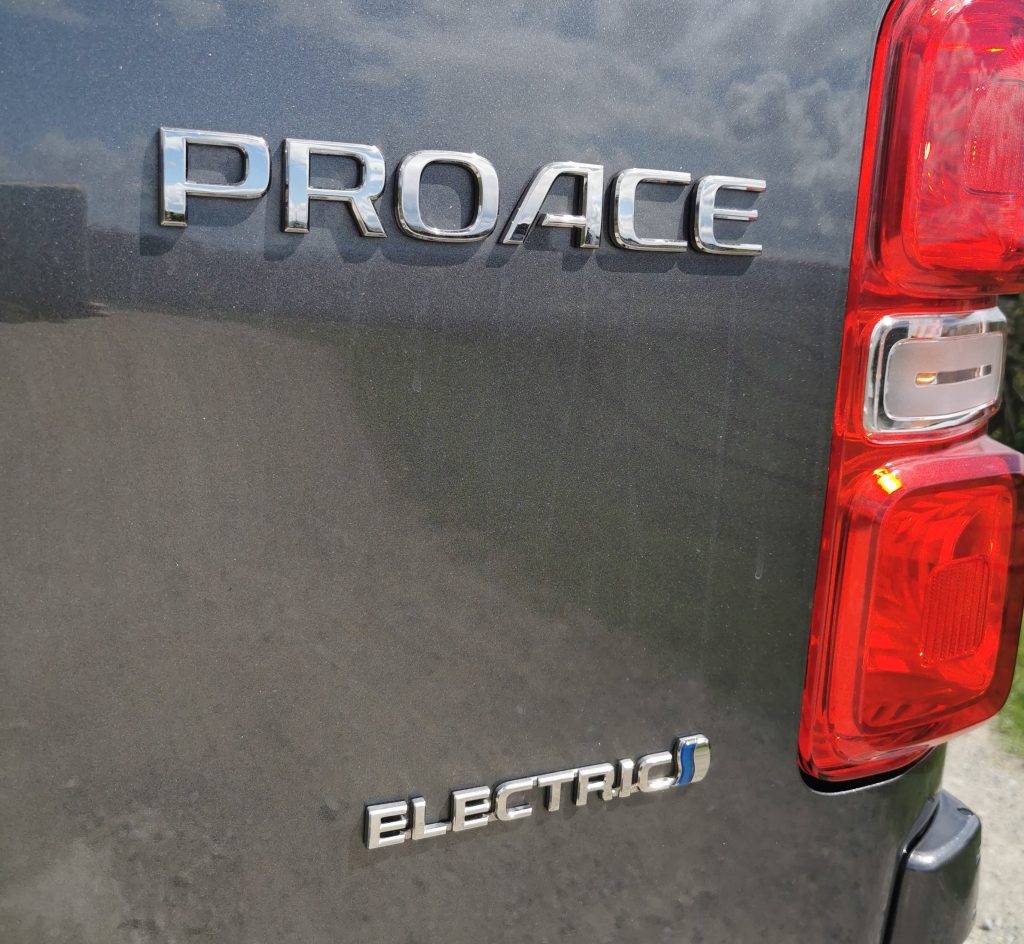Toyota Proace Electric Review
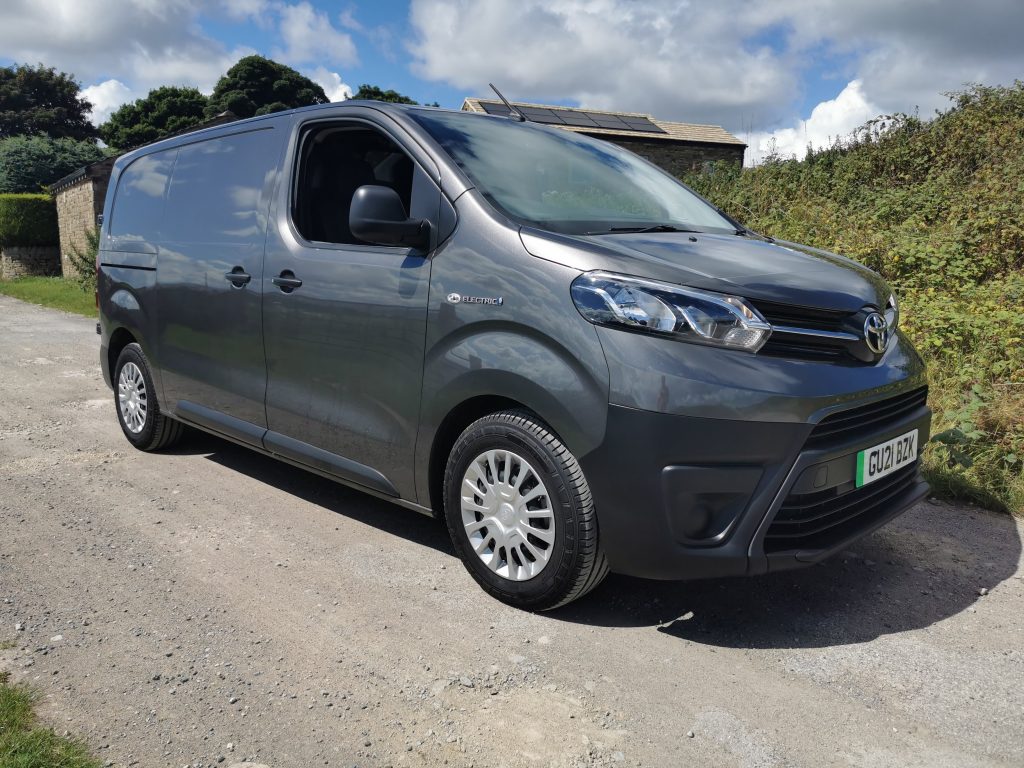
The move to pure electric vans is moving apace, and no more so than in the medium van sector. Most manufacturers now have something to offer, even Ford which has been particularly slow to the party recently announcing details of the upcoming E-Transit Custom, something that has been eagerly awaited by many.
Stellantis, with their Fiat, Peugeot, Citroen and Vauxhall brands has had electric versions of their popular medium van for some time now, and due to the alliance with Toyota, the Japanese company market this van as the Proace Electric.
The model range
Although the diesel engined Proace is offered in two body lengths and three trim levels, those opting for this fully electric version will have few choices to make. You can only have the Proace Electric in medium length, and in Icon trim, that’s the mid range offering. The only decision you’ll need to make is whether to opt for the 50kWh or 75kWh battery pack.
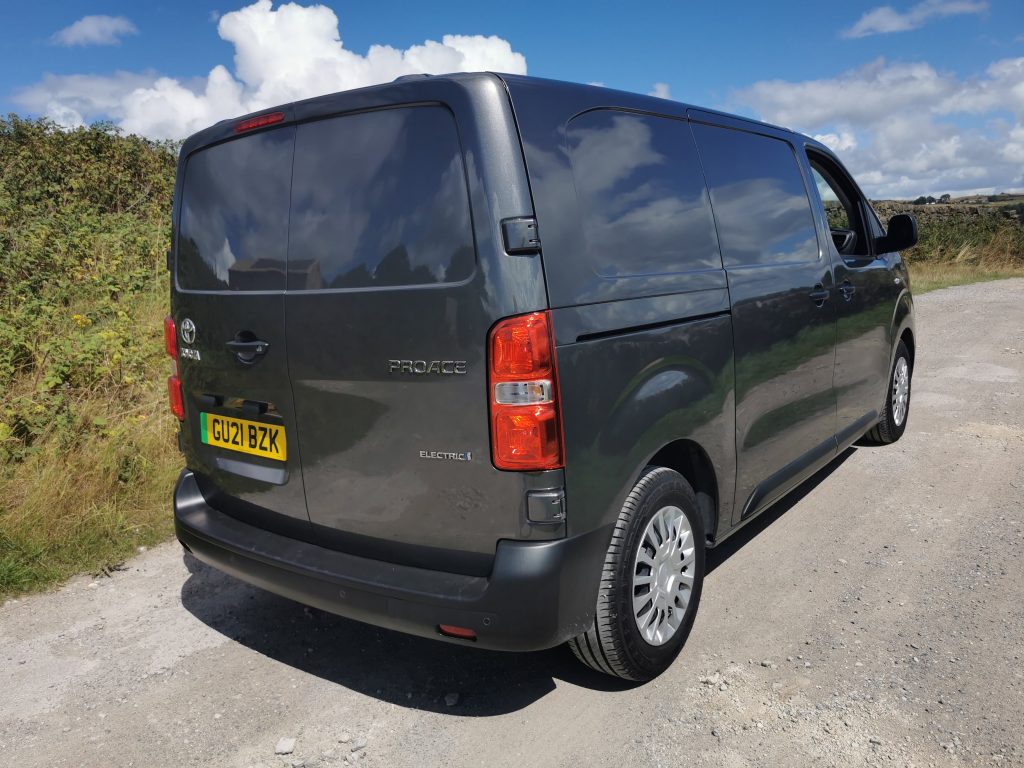
Weights and measures
There’s a fairly typical medium sector van load length of 2413mm, a maximum width of 1636mm and, with a load height of 1397mm this translates into a load volume of 5.3 cubic metres. The load area is accessed by twin rear doors and, usefully you get two sliding side doors, most manufacturers only offering a single one as standard equipment.
Payload is usually compromised in an electric version of a van in comparison to its diesel sibling due to the weight of the battery pack. The Proace Electric scores highly in this regard, with a very commendable capacity of around 1000kgs. Another bonus is that the van is able to tow – something you can’t take for granted with all electric vans. A 1000kg braked trailer can be pulled, and due to the high gross train weight you can simultaneously carry the maximum payload inside the van, although this will no doubt bring the driving range between charges down dramatically.
In the loadspace, there are a few tie down points and the steel bulkhead has a small mesh window – it doesn’t really serve any purpose however as there are no windows in the back doors so not only can you not see out through the rear, you can’t see your load either as it’s too dark.
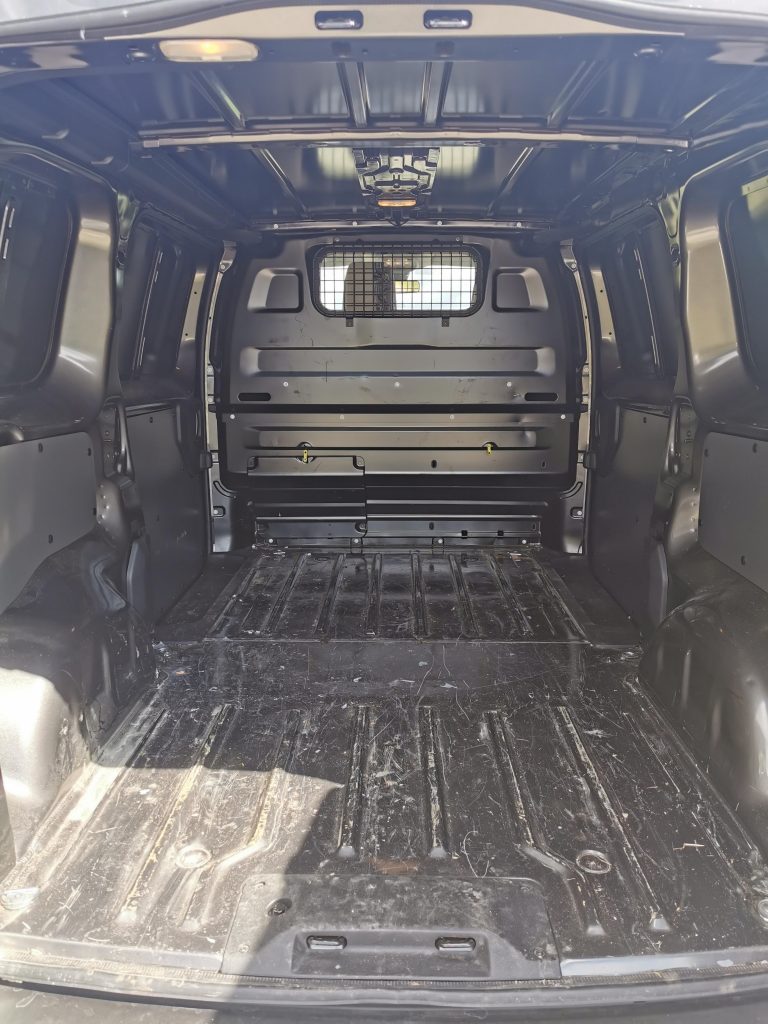
Under the bonnet
The 136hp electric motor gets its fuel from a 50kWh or 75kWh battery pack, the larger option being present on the test van. With this battery, the quoted WLTP combined cycle range is a very respectable and competitive 205 miles, a figure which is pretty much class leading. Top speed is limited to 80mph, and the 0-60mph sprint will take 13.4 seconds with the larger battery, or 12.0 seconds if you opt for the smaller, lighter version. There are three drive modes available, selectable by a switch in the cab. Default is ‘Normal’, restricting the power to 109hp to help balance performance with range. ‘Eco’ drops this further to 82hp, whilst ‘Sport’ unleashes the motors full potential at a cost of range.
Charging times? For the larger battery pack, the standard 7.4kWh wallbox at home will get you to 100% in around eleven hours, and, a DC public chargepoint, depending on charge rate can get the battery from zero to 80% in as little as 48 minutes. If you’ve just got a standard 3-pin mains socket, you’ll have to wait 22.5 hours for a full charge.
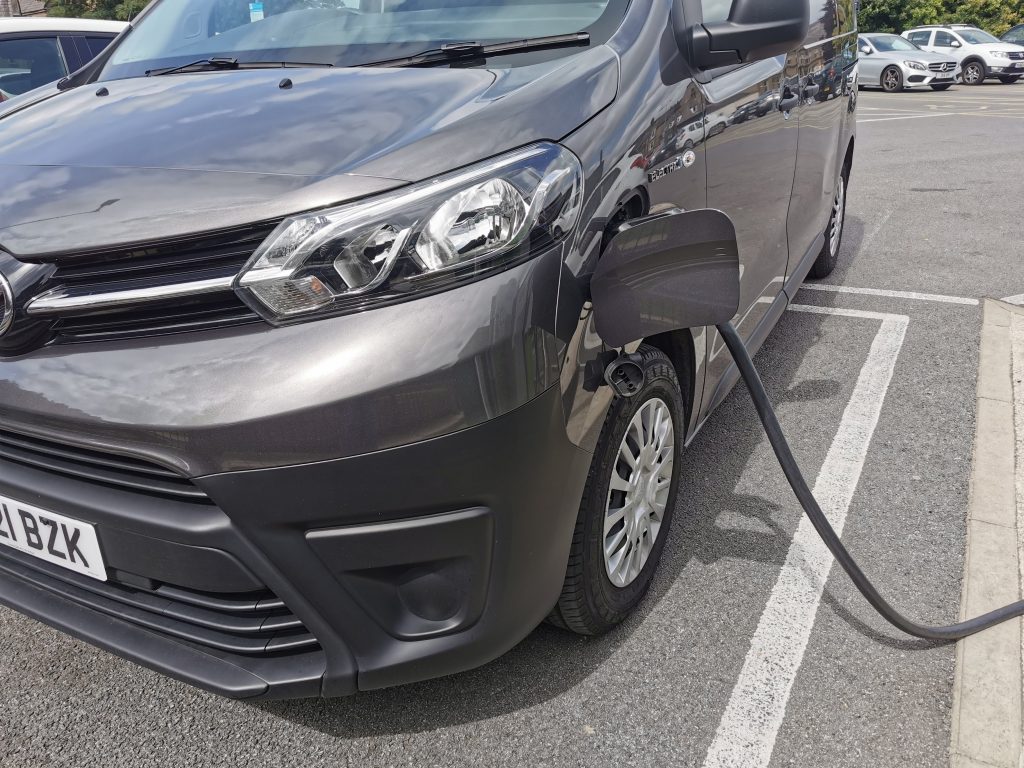
Equipment and trim
Although at Icon, the mid trim level point the Proace Electric does have a reasonable amount of spec as standard. In the cab there’s air conditioning, cruise control, electric windows, a 7” touchscreen multimedia unit, incorporating a DAB radio and Apple CarPlay / Android Auto smartphone integration, automatic headlights and wipers, and rear parking sensors.
Driver aids and safety tech include vehicle stability control, hill start assist and a tyre pressure warning system.
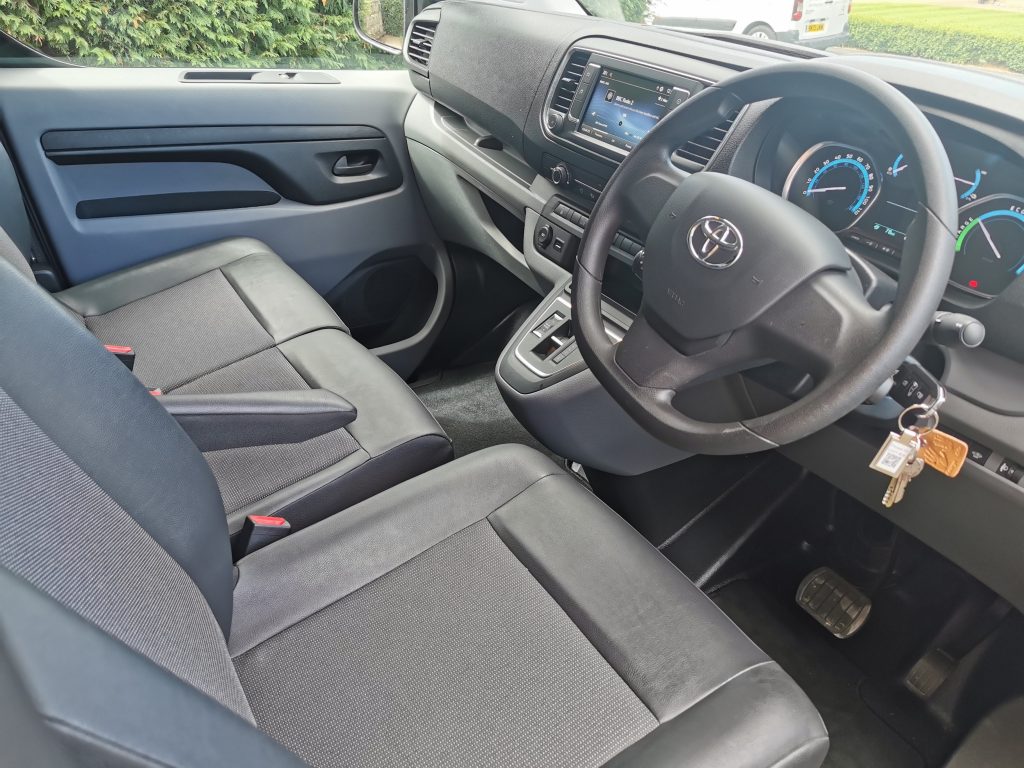
What’s it like to drive?
The cab environment is nothing special, but there’s also not much wrong with it either. The dash layout is functional, the instrument display with the usual electric vehicle dials showing state of charge and a live readout informing the driver of how much power they are using at any given time (or, regenerating and putting charge back into the battery when decelerating or descending a hill).
It’s not the biggest cab, it feels smaller than some competitor vehicles and, whilst not being an issue if the driver is working alone, with three people on board it does feel a little cramped. Storage for the drivers bits and bobs is a little limited too.
I had no issue with getting comfortable in the driver’s seat, and the position in general was fine. It has been reported elsewhere that the pedals are offset and can cause discomfort on long journeys but I didn’t experience this either on this van, or the diesel Proace and Vivaro I’ve had on test previously.
It’s still a novelty to switch a van on, rather than start an engine, and to move away almost silently, with just a gentle whine apparent in or outside the cab. Despite the acceleration figure quoted being fairly modest by today’s standards, with 100% of torque being available immediately, the sprint to, say 30mph is very rapid indeed. I had the opportunity to take the van on the motorway, and, albeit unladen it had little difficulty in achieving and maintaining the 80mph top speed.
Around town the van is very nimble, the steering being precise and encouraging the driver to ‘chuck it around a bit’. Ride quality is good which is not always the case in a van with no load in, and although the lack of an engine will highlight other potential sources of noise and vibration, there was nothing excessive, mostly confined to tyre noise on coarse surfaces.
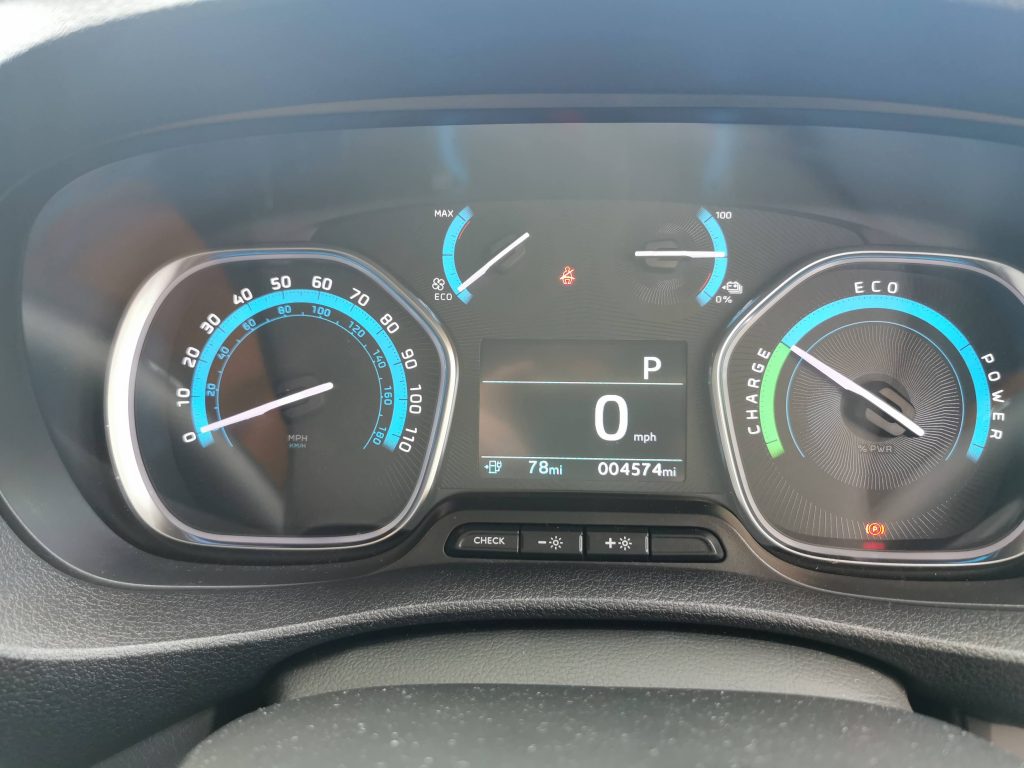
Servicing and warranty
You’ll need to get the Proace Electric serviced every 2 years or 25,000 miles, whichever comes first. Where Toyota score over their Stellantis rivals is on the warranty. Although the previous 5 year offering is now reduced to 3 with a 60,000 mile limit, providing you have the van serviced at a Toyota dealer, the warranty runs for up to 10 years, or to a limit of 100,000 miles.
The battery is guaranteed to retain a set percentage of capacity for 8 years or 62,000 miles.
Conclusion
In diesel form, this is a great van – payloads are good, the van looks sharp and modern and, depending on the trim level the spec is decent too. The transformation to a pure electric van has been executed very well indeed. With the larger battery pack, the range will be more than adequate for the majority of operations and can be quickly replenished overnight with a wallbox charger. It would however be nice for the electric van customer to have the same trim level choices that the diesel user enjoys.
The Proace Electric has won a number of industry awards, and, as an overall package it’s not difficult to see why. It’s a very good van.
